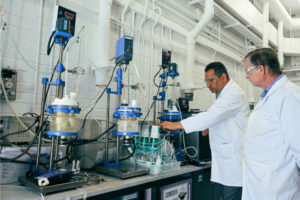Psilocybe natalensis History
P. natalensis mushrooms were discovered in South Africa in the Natal region where they often grow in a xerophytic, dry habitat. They were first discovered in 1995 by scientists Jochen Gartz, Michael Smith, Derek Reid, and Albert Eicker and are known for their strong bluing feature and high potency.
Due to the lack of research and evidence, details on how this unique South African mushroom species may have been used on the continent are yet to be known. However, researchers found murals in Tassili caves in the south of Algeria, known to be the oldest prehistoric evidence for psychotropic mushrooms. These figures are thought to resemble African mushroom species, including P. cubensis and P. natalensis.
Effects of Natal Super Strength
The effects of psilocybin-containing mushrooms depend on many factors, such as dose, set and setting, preparation, and consumption methods. Therefore it is hard to tell what effects are specific to which species.
However, Psilocybe natalensis tends to be a revered species among those who have grown and sampled it. Those who have experienced P. natalensis share the following sentiments:
“I can only compare them to APE [P. cubensis], and I prefer these. You could say they’re about equal in strength, but they give me a different level of the trip. If cubes are 3D, natalensis are 4D.”
“After natalensis, I’ll rarely touch a cubensis again save for microdosing.”
“I tend to be happier on nats. They seem less edgy to me than cubensis.”
Additionally, a thread on Shroomery.org documented people’s experiences cultivating and sampling the species. Some growers mused:
“I wouldn’t be surprised if natalensis becomes the most common cultivated species within the next 5-10 years; lots of cloning/isolates needed to dial in specific phenos, but yeah, IMHO it’s far superior.”
“Natalensis is as easy to grow as cubensis but stronger and seems to be a happier experience for most.”
The Benefits Of Psilocybe natalensis
We’ve only just scratched the surface when it comes to profiling the chemical constituents of psilocybin-producing mushrooms, as evidenced by the recent detection of beta-carboline compounds in trace amounts and the recently discovered presence of various alkaloids such as baeocystin, norbaeocystin, and aeruginascin. .
One study concluded that the “varied cocktail of tryptamines (serotonergic hallucinogens) in wild mushrooms could influence the medicinal effect.” Another fresh-off-the-presses research study stated that the “P. cubensis metabolome possibly contains thousands of uncharacterized compounds, at least some of which may be bioactive,” and that “our understanding of the chemical diversity of these mushrooms is largely incomplete.”
Still, Psilocybe natalensis has been profiled with a range of secondary compounds found that demonstrated antioxidant and anti-inflammatory properties.
In another study, human macrophage cells were treated with magic mushroom water extracts in vitro. Four mushroom species (Panaeolus cyanescens, Psilocybe natalensis, Psilocybe cubensis, and Psilocybe cubensis A+ species) showed anti-inflammatory effects on proinflammatory agents.
There are no studies directly researching the therapeutic use of Psilocybe natalensis, but their anti-inflammatory effects might be helpful in some cases, such as for treatment of chronic inflammation. P. natalensis can repress the activity of cytokine proteins that initiate immune responses, such as tumor necrosis factor (TNF-α).


